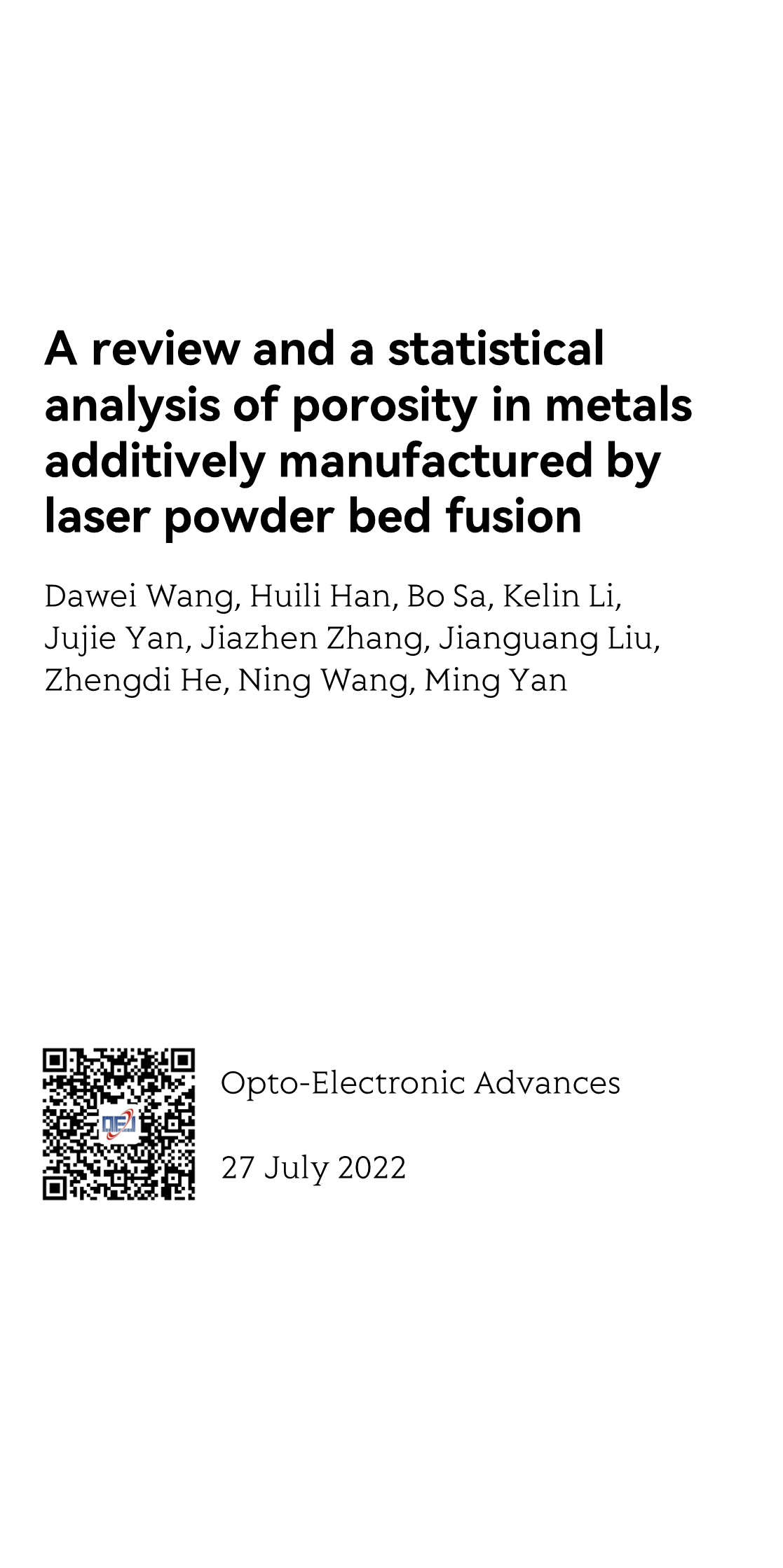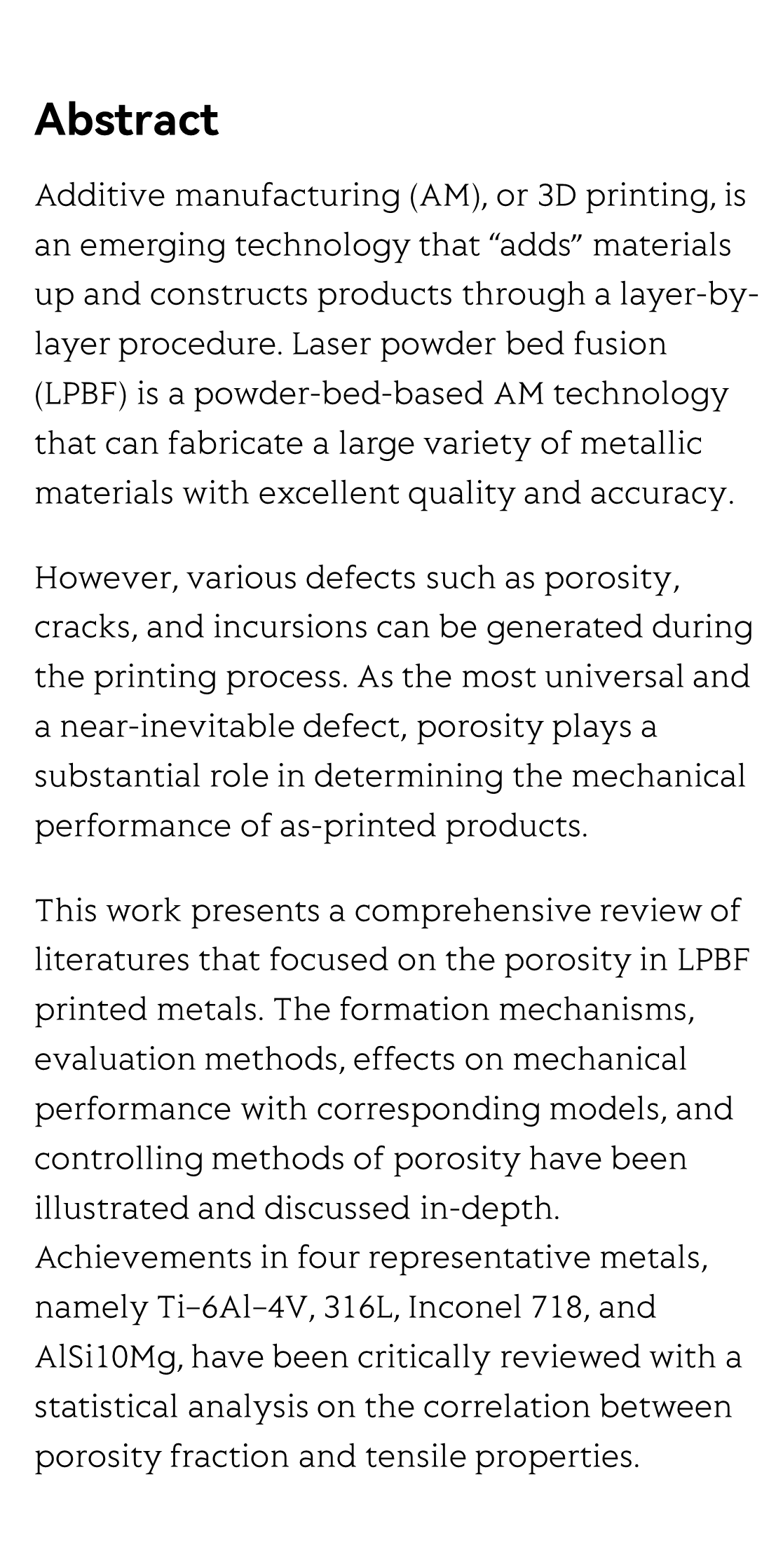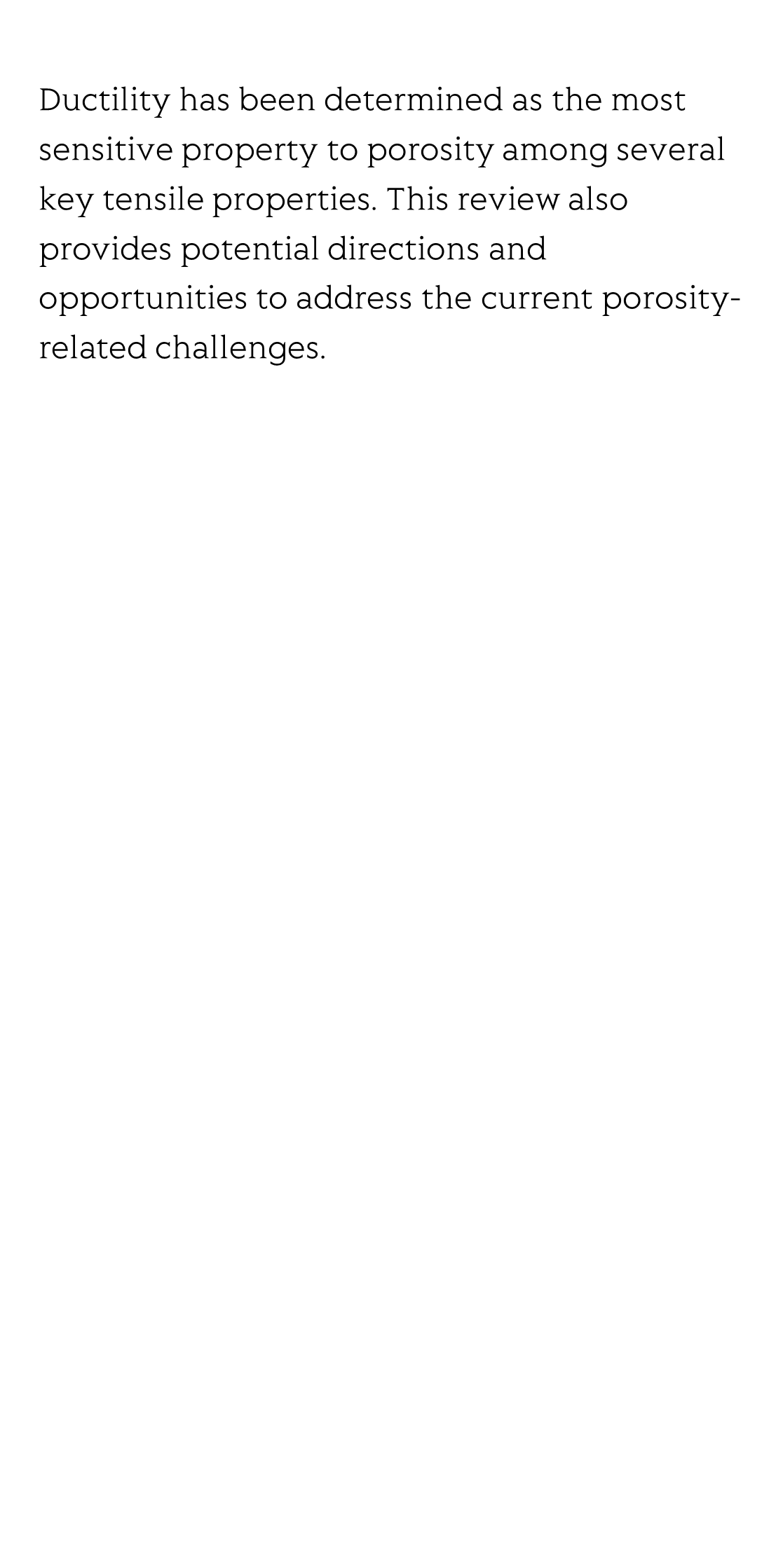(Peer-Reviewed) A review and a statistical analysis of porosity in metals additively manufactured by laser powder bed fusion
Dawei Wang 王大为 ¹ ⁵, Huili Han ², Bo Sa 撒波 ¹, Kelin Li ¹, Jujie Yan 严菊杰 ¹, Jiazhen Zhang 张嘉振 ³, Jianguang Liu 刘建光 ³, Zhengdi He 何正娣 ⁴, Ning Wang 王宁 ⁴, Ming Yan 严明 ¹ ⁵
¹ Department of Materials Science and Engineering, and Shenzhen Key Laboratory for Additive Manufacturing of High Performance Materials, Southern University of Science and Technology, Shenzhen 518055, China
中国 深圳 南方科技大学材料科学与工程系 深圳市高机能材料增材制造重点实验室
² Department of Mechanical and Energy Engineering, Southern University of Science and Technology, Shenzhen 518055, China
中国 深圳 南方科技大学机械与能源工程系
³ COMAC Beijing Aircraft Technology Research Institute, Beijing 102211, China
中国 北京 中国商飞 北京民用飞机技术研究中心
⁴ Shenzhen Technology University, Shenzhen 518118, China
中国 深圳 深圳技术大学
⁵ Jiaxing Research Institute, Southern University of Science and Technology, Jiaxing 314031, China
中国 嘉兴 南方科技大学嘉兴研究院
Opto-Electronic Advances, 2022-07-27
Abstract
Additive manufacturing (AM), or 3D printing, is an emerging technology that “adds” materials up and constructs products through a layer-by-layer procedure. Laser powder bed fusion (LPBF) is a powder-bed-based AM technology that can fabricate a large variety of metallic materials with excellent quality and accuracy.
However, various defects such as porosity, cracks, and incursions can be generated during the printing process. As the most universal and a near-inevitable defect, porosity plays a substantial role in determining the mechanical performance of as-printed products.
This work presents a comprehensive review of literatures that focused on the porosity in LPBF printed metals. The formation mechanisms, evaluation methods, effects on mechanical performance with corresponding models, and controlling methods of porosity have been illustrated and discussed in-depth. Achievements in four representative metals, namely Ti−6Al−4V, 316L, Inconel 718, and AlSi10Mg, have been critically reviewed with a statistical analysis on the correlation between porosity fraction and tensile properties.
Ductility has been determined as the most sensitive property to porosity among several key tensile properties. This review also provides potential directions and opportunities to address the current porosity-related challenges.
Flicker minimization in power-saving displays enabled by measurement of difference in flexoelectric coefficients and displacement-current in positive dielectric anisotropy liquid crystals
Junho Jung, HaYoung Jung, GyuRi Choi, HanByeol Park, Sun-Mi Park, Ki-Sun Kwon, Heui-Seok Jin, Dong-Jin Lee, Hoon Jeong, JeongKi Park, Byeong Koo Kim, Seung Hee Lee, MinSu Kim
Opto-Electronic Advances
2025-09-25
Dual-frequency angular-multiplexed fringe projection profilometry with deep learning: breaking hardware limits for ultra-high-speed 3D imaging
Wenwu Chen, Yifan Liu, Shijie Feng, Wei Yin, Jiaming Qian, Yixuan Li, Hang Zhang, Maciej Trusiak, Malgorzata Kujawinska, Qian Chen, Chao Zuo
Opto-Electronic Advances
2025-09-25







